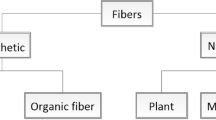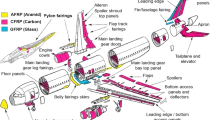Abstract
The need of carbon fiber–reinforced plastics (CFRP) has been driven by the increasingly wide applications in many industrials including sports, transportation, and energy. However, until now, the poor machinability of CFRP can be still considered the key problem and the most urgent machining-induced issue can be the delamination damage in the drilling process. Although many efforts have been paid to investigate this topic, most of them investigated the delamination at either the hole entrance and the exit. Very few of these studies focused on the internal delamination defects on the hole wall, although these internal defects can be as important as the entrance and exit defects. To fill this gap, this paper investigated the condition effects (feed rate, spindle speed, ultrasonic vibration of drills, and the workpiece support strategy) on the delamination in CFRP drilling, with the special focus on the internal delamination damage on the inside hole walls. Based on both the experimental and theoretical analysis, the effectiveness of the back supports and the variable feed rates was investigated as well. Considering few published studies reported the delamination on the hole wall, the key findings in this paper are expected to be meaningful to deepen the understanding of CFRP drilling and helpful to provide some industrial guidance.
















Similar content being viewed by others
References
Geng D, Zhang D, Xu Y, He F, Liu F (2014) Comparison of drill wear mechanism between rotary ultrasonic elliptical machining and conventional drilling of CFRP. J Reinf Plast Compos 33(9):797–809
Shyha I, Soo SL, Aspinwall D, Bradley S (2010) Effect of laminate configuration and feed rate on cutting performance when drilling holes in carbon fibre reinforced plastic composites. J Mater Process Technol 210(8):1023–1034
Ning F, Cong W, Wang H, Hu Y, Hu Z, Pei Z (2017) Surface grinding of CFRP composites with rotary ultrasonic machining: a mechanistic model on cutting force in the feed direction. Int J Adv Manuf Technol:1–13
Won MS, Dharan CKH (2002) Chisel edge and pilot hole effects in drilling composite laminates. J Manuf Sci Eng 124(2):242–247
Palanikumar K (2015) Machinability of fibre-reinforced plastics. DE Gruyter, Berlin, pp 978–3-11-029222-0
Gupta A, Ascroft H, Barnes S (2016) Effect of chisel edge in ultrasonic assisted drilling of carbon fibre reinforced plastics (CFRP) ☆. Procedia CIRP 46:619–622
Fernando PKSC, Zhang M, Pei Z, Cong W (2017) Rotary ultrasonic machining: effects of tool end angle on delamination of CFRP drilling. In: ASME 2017 International Manufacturing Science and Engineering Conference Collocated with the Jsme/asme 2017 International Conference on Materials and Processing, p V001T002A015
Hocheng H, Tsao CC (2003) Comprehensive analysis of delamination in drilling of composite materials with various drill bits. J Mater Process Technol 140(1-3):335–339
JamalSheikh-Ahmad NU, Cheraghi H (2012) Machining damage in edge trimming of CFRP. Mater Manuf Process 27(7):802–808
Santiuste C, Olmedo A, Soldani X, Miguelez H (2012) Delamination prediction in orthogonal machining of carbon long fiber-reinforced polymer composites. J Reinf Plast Compos 31(31):875–885
Zou P, Li Y, Zhang K, Liu P, Zhong H (2017) Mode I delamination mechanism analysis on CFRP interference-fit during the installation process. Mater Des 116:268–277
Stone R, Krishnamurthy K (1996) A neural network thrust force controller to minimize delamination during drilling of graphite-epoxy laminates. Int J Mach Tool Manu 36(9):985–1003
Ho-Cheng H, Dharan CKH (1990) Delamination during drilling in composite laminates. J Eng Ind 112(3):236–239
Tsao CC, Chiu YC (2011) Evaluation of drilling parameters on thrust force in drilling carbon fiber reinforced plastic (CFRP) composite laminates using compound core-special drills. Int J Mach Tool Manu 51(9):740–744
Timoshenko SP, Woinowsky-Krieger S (1959) The theory of plates and shells. In: vol 2
Dharan CKH (1978) Fracture mechanics of composite materials. J Eng Mater Technol 100(3):233. https://doi.org/10.1115/1.3443485
Lachaud F, Piquet R, Collombet F, Surcin L (2001) Drilling of composite structures. Compos Struct 52(3):511–516
Girot F, Dau F, Gutiérrez-Orrantia ME (2017) New analytical model for delamination of CFRP during drilling. J Mater Process Technol 240:332–343
Wang H, Jie S, Li J, Li W (2014) Investigation on delamination morphology during drilling composite laminates. Int J Adv Manuf Technol 74(1-4):257–266
Heisel U, Pfeifroth T (2012) Influence of point angle on drill hole quality and machining forces when drilling CFRP. Procedia CIRP 1(7):471–476
Cong WL, Pei ZJ, Feng Q, Deines TW, Treadwell C (2012) Rotary ultrasonic machining of CFRP: a comparison with twist drilling. J Reinf Plast Compos 31(5):313–321
Phapale K, Ahire A, Singh R (2018) Experimental characterization and finite element modeling of critical thrust force in CFRP drilling. Mach Sci Technol 22(2):249–270. https://doi.org/10.1080/10910344.2017.1337134
Faraz A, Biermann D, Weinert K (2009) Cutting edge rounding: an innovative tool wear criterion in drilling CFRP composite laminates. Int J Mach Tool Manu 49(15):1185–1196
Tsao CC, Kuo KL, Hsu IC (2012) Evaluation of a novel approach to a delamination factor after drilling composite laminates using a core–saw drill. Int J Adv Manuf Technol 59(5-8):617–622
Davim JP, Rubio JC, Abrao AM (2007) A novel approach based on digital image analysis to evaluate the delamination factor after drilling composite laminates. Compos Sci Technol 67(9):1939–1945
Davim JP, Reis P (2003) Drilling carbon fiber reinforced plastics manufactured by autoclave—experimental and statistical study. Mater Des 24(5):315–324. https://doi.org/10.1016/S0261-3069(03)00062-1
Davim JP (2009) Drilling of composite materials. NOVA Publishers, New York 978-1-60741-170-5
Davim JP (2010) Machining composites materials. ISTE-Wiley, London 978-1-84821-103-4
Krishnaraj V, Zitoune R, Davim JP (2013) Drilling of polymer-matrix composites. Springer, Heidelberg 978-3-642-38344-1
Gaitonde VN, Karnik SR, Rubio JC, Correia AE, Abrao AM, Davim JP (2011) A study aimed at minimizing delamination during drilling of CFRP composites. J Compos Mater 45(22):2359–2368
Davim JP, Reis P, António CC (2004) Drilling fiber reinforced plastics (FRPs) manufactured by hand lay-up: influence of matrix (Viapal VUP 9731 and ATLAC 382-05). J Mater Process Technol 155-156(1):1828–1833
Campos Rubio J, Abrao AM, Faria PE, Correia AE, Davim JP (2008) Effects of high speed in the drilling of glass fibre reinforced plastic: evaluation of the delamination factor. Int J Mach Tools Manuf 48(6):715–720. https://doi.org/10.1016/j.ijmachtools.2007.10.015
Abrão AM, Rubio JCC, Faria PE, Davim JP (2008) The effect of cutting tool geometry on thrust force and delamination when drilling glass fibre reinforced plastic composite. Mater Des 29(2):508–513. https://doi.org/10.1016/j.matdes.2007.01.016
Rubio JCC, Abrão AM, Faria PE, Correia AE, Davim JP (2008) Delamination in high speed drilling of carbon fiber reinforced plastic (CFRP). J Compos Mater 42(15):1523–1532
Gaitonde VN, Karnik SR, Rubio JC, Correia AE, Abrão AM, Davim JP (2008) Analysis of parametric influence on delamination in high-speed drilling of carbon fiber reinforced plastic composites. J Mater Process Technol 203(1):431–438. https://doi.org/10.1016/j.jmatprotec.2007.10.050
Abhishek K, Datta S, Mahapatra SS (2015) Optimization of thrust, torque, entry, and exist delamination factor during drilling of CFRP composites. Int J Adv Manuf Technol 76(1-4):401–416
Jain S, Yang DCH (1993) Effects of feedrate and chisel edge on delamination in composites drilling. In: Processing and manufacturing of composite materials. Proc Symp 115(4):37–51
Ning F, Wang H, Cong W, Fernando PK (2017) A mechanistic ultrasonic vibration amplitude model during rotary ultrasonic machining of CFRP composites. Ultrasonics 76:44–51
Cong WL, Pei ZJ, Sun X, Zhang CL (2014) Rotary ultrasonic machining of CFRP: a mechanistic predictive model for cutting force. Ultrasonics 54(2):663–675
Davim JP, Reis P (2003) Study of delamination in drilling carbon fiber reinforced plastics (CFRP) using design experiments. Compos Struct 59(4):481–487
Rahmé P, Landon Y, Lachaud F, Piquet R, Lagarrigue P (2011) Analytical models of composite material drilling. Int J Adv Manuf Technol 52(5-8):609–617
Funding
The authors acknowledge the Excellent Dissertation Cultivation Funds of Wuhan University of Technology (2017-YS-029).
Author information
Authors and Affiliations
Corresponding author
Additional information
Publisher’s note
Springer Nature remains neutral with regard to jurisdictional claims in published maps and institutional affiliations.
Rights and permissions
About this article
Cite this article
Wu, C.Q., Gao, G.L., Li, H.N. et al. Effects of machining conditions on the hole wall delamination in both conventional and ultrasonic-assisted CFRP drilling. Int J Adv Manuf Technol 104, 2301–2315 (2019). https://doi.org/10.1007/s00170-019-04052-y
Received:
Accepted:
Published:
Issue Date:
DOI: https://doi.org/10.1007/s00170-019-04052-y




